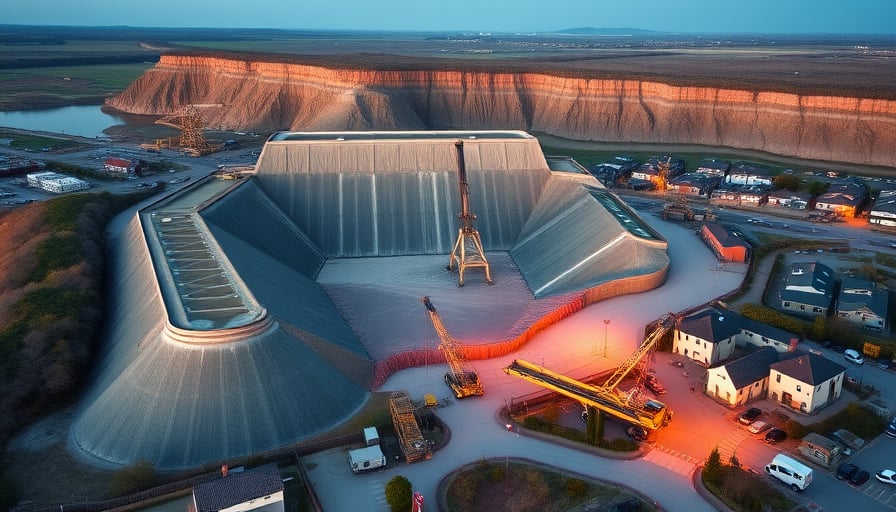Strabag SE: A Record‑Breaking Order Book Amid Turbulence
Strabag SE, the Austrian construction juggernaut, has shattered its own ceiling by pushing the order backlog past the €30 billion mark for the first time in its history. The figure, announced in the company’s nine‑month trading statement on 13 November 2025, represents a 6 % rise to €14.4 billion in the last nine months, underscoring a robust pipeline that fuels the firm’s valuation and justifies its current price‑to‑earnings ratio of 9.31. Yet, even as the backlog climbs, the company has modestly trimmed its 2025 revenue forecast, signalling caution in an environment where infrastructure spending faces political friction and escalating costs.
The Numbers That Matter
- Order backlog: €30.1 billion (first‑ever record).
- Nine‑month performance: €14.4 billion, up 6 % from the same period a year earlier.
- Market cap: €7.69 billion, with a current share price of €68 – a 7.9 % rally from the close on 11 November.
- PE ratio: 9.31, comfortably below the 12‑year average for the construction and engineering sector.
The backlog’s growth is not merely a statistical flourish; it translates directly into revenue recognition over the next 12–24 months, providing a cushion against the volatility that has recently plagued the sector. However, the slight downward revision of the 2025 outlook suggests that Strabag is aware of the risks inherent in a construction cycle that can be derailed by political disputes, cost overruns, or regulatory changes.
Political Storms and Operational Challenges
A notable blemish on the company’s record lies in the ongoing standoff over the M30 motorway project in Hungary. The Hungarian Ministry of Transport has locked the highway, citing a “sharp clash” with Strabag’s operations. While the dispute has not yet escalated into a full‑blown lawsuit, it highlights the geopolitical fragility that can undermine even the most robust pipelines. In a region where political will is often a limiting factor for large infrastructure projects, Strabag’s ability to navigate such conflicts will be crucial for maintaining its growth trajectory.
Digital Transformation: A Strategic Pivot
Strabag’s announcement of its digitalisation strategy—reported by Punkt4.info—marks a strategic pivot aimed at reducing manual processes and improving project transparency. The company’s digital platform is designed to streamline contract management, cost tracking, and real‑time progress updates across its vast portfolio, which spans from rail bridges to thermal baths. By embedding digital tools into its operations, Strabag seeks to mitigate the cost escalation that has plagued the sector and to enhance its competitive edge in the EU’s push for sustainable construction.
Market Reactions and Investor Sentiment
The Austrian stock market’s response to Strabag’s announcement was muted. The ATX Prime and the broader ATX indices edged higher by 0.2 % and 0.19 %, respectively, reflecting a cautious but optimistic outlook. Investors appear to weigh the record backlog against the political headwinds and the company’s adjusted revenue targets. The share price’s 7.9 % rise since the 11 November close suggests that the market acknowledges the company’s underlying strength but remains wary of potential setbacks.
What Does This Mean for Strabag’s Future?
- Cash Flow Cushion – A €30 billion backlog provides a significant buffer, ensuring that Strabag can meet its obligations even if a few projects face delays.
- Valuation Discipline – The current PE ratio of 9.31 indicates that the market is pricing the company conservatively, which could translate into upside potential if operational efficiencies materialise.
- Risk Exposure – Political disputes such as the M30 motorway case could erode project timelines, increasing costs and eroding margins.
- Digital Advantage – Successful implementation of the digital platform could reduce overruns, improve client satisfaction, and open new revenue streams in project management services.
In sum, Strabag SE’s record order backlog is a testament to its scale and market reach, but it is not a guarantee of untroubled growth. The company must continue to manage geopolitical risks, cost pressures, and the execution of its digital strategy if it is to convert this pipeline into sustainable profitability.




